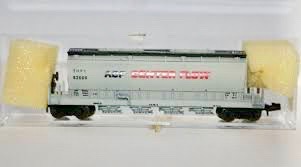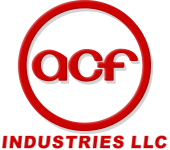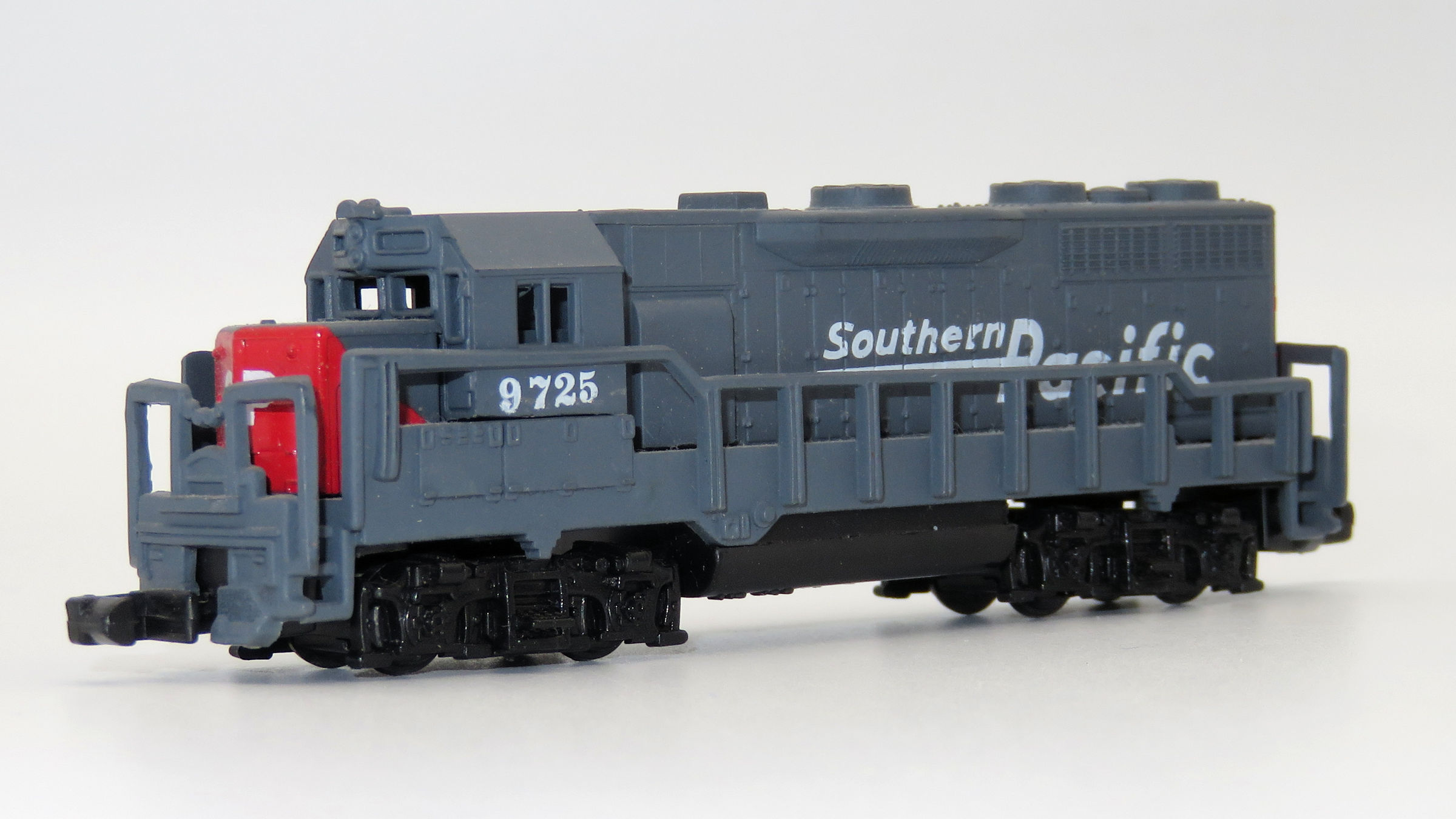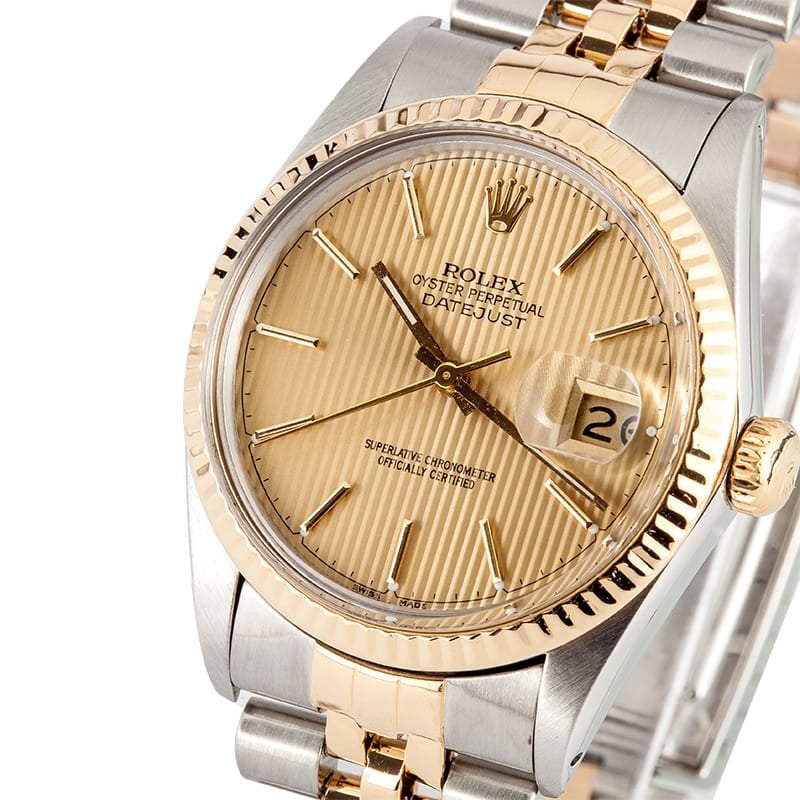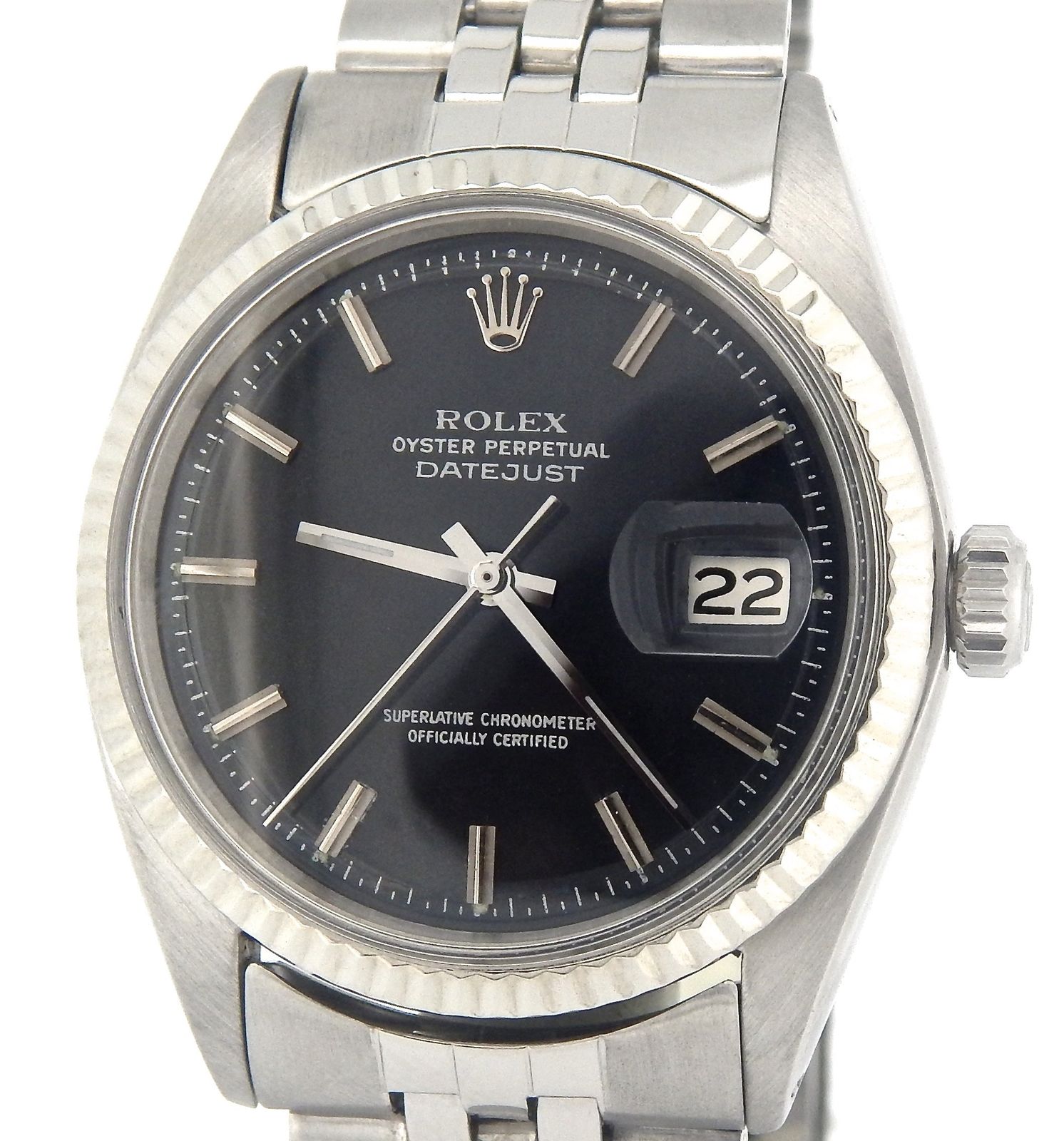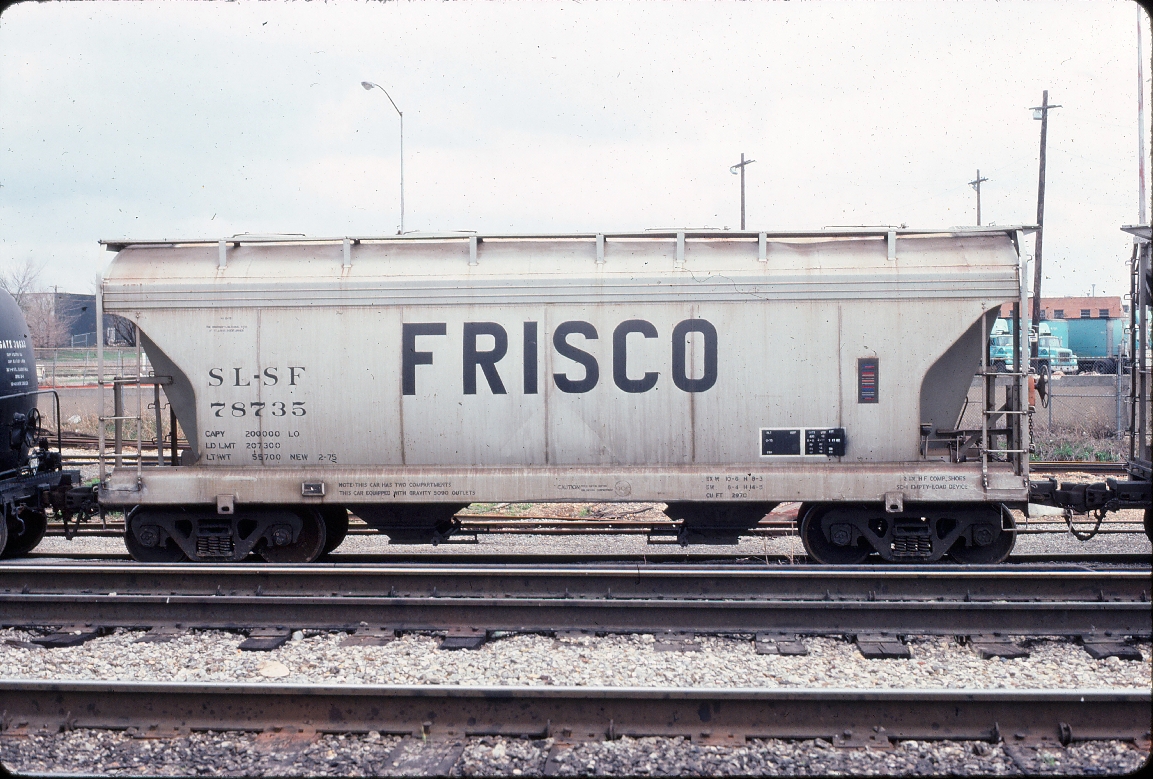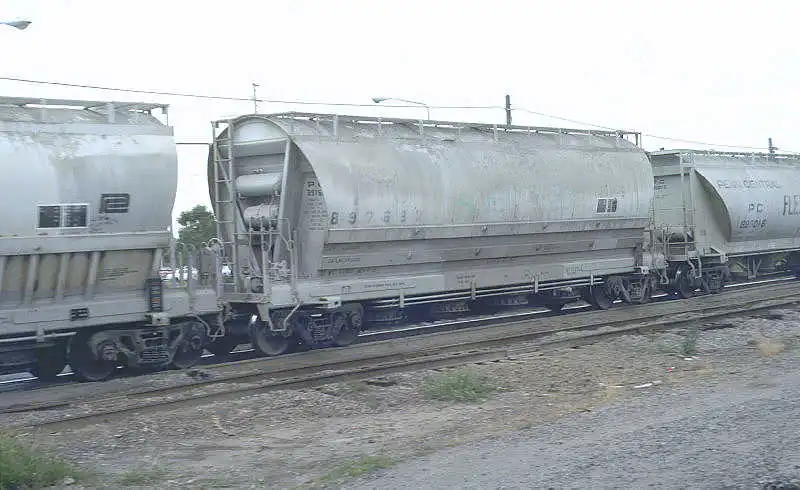Model Information: AHM contracted Roco to use the "Centerflow" hopper mold to produce cars. This mold has "Atlas Austria" written on the base of the car. To our knowledge Atlas did not sell this car. Apparently they asked Roco to design it but never ordered it into production. At least we have yet to spot this mold in any Atlas catalogs. When AHM stopped making this car, Eastern Seaboard models contracted Roco to keep making new releases, and these also have "Atlas Austria" on the bottoms of the cars.
Prototype History: Built between August 1964 and June 1966 the American Car & Foundry (ACF) 3500 cu. ft. covered hopper was an early
innovator in pressure differential unloading and a marketing masterclass thanks to the “Flexi Flo” tag coined by the car’s
biggest customer, the New York Central railroad.
New York Central specified a car with a 315,000 pound gross weight (315K) to take full advantage of the heavy-duty capability of its core mainlines. The cars had a load limit of 245,200 lbs., allowing them to hold six truckloads of product each – a critical factor when trying to win business back from the highway. The specific gravity of powdered cement dictated a 3500 cubic foot capacity. To emphasize how far ahead of the times NYC was consider that the standard railcar gross weight was 220K, there still isn’t a national 315K network in 2020 and some short lines and regional railroads are still struggling to get their bridges upgraded to 286K.
The cars were delivered to NYC in four batches as outlined in the roster below. They each differed slightly from each other. The most obvious spotting characteristic were the vertical side ribs on the first batch of 25 cars. One has to look closely to spot the differences between the next two lots. The final NYC group was made up of five 3600 cubic foot tank type covered hoppers built for BF Goodrich. They are included for reference but are a totally different car design.
New York Central specified a car with a 315,000 pound gross weight (315K) to take full advantage of the heavy-duty capability of its core mainlines. The cars had a load limit of 245,200 lbs., allowing them to hold six truckloads of product each – a critical factor when trying to win business back from the highway. The specific gravity of powdered cement dictated a 3500 cubic foot capacity. To emphasize how far ahead of the times NYC was consider that the standard railcar gross weight was 220K, there still isn’t a national 315K network in 2020 and some short lines and regional railroads are still struggling to get their bridges upgraded to 286K.
The cars were delivered to NYC in four batches as outlined in the roster below. They each differed slightly from each other. The most obvious spotting characteristic were the vertical side ribs on the first batch of 25 cars. One has to look closely to spot the differences between the next two lots. The final NYC group was made up of five 3600 cubic foot tank type covered hoppers built for BF Goodrich. They are included for reference but are a totally different car design.
Road Name History: ACF Industries LLC originally known as The American Car and Foundry Company and was formed in 1899. In 1955 ACF Industries, Incorporated became the new name for The American Car and Foundry. Over the years railcar manufacturing and leasing were the major forces in ACF's economic growth and stability. ACF has weathered many changes and is still committed to the manufacture of new railcar and railcar parts and sub-assemblies. ACF Industries LLC became a successor to ACF Industries, Incorporated on May 1, 2003.
ACF Industries LLC is a leader in the manufacture and fabrication of specialty railcar parts and miscellaneous steel products. While the Company's primary purpose is to compliment the new car and repair car market, it also provides manufacturing support to other manufacturers of steel products.
ACF Industries LLC is headquartered in St. Charles, Missouri and our manufacturing facility is located in Milton, Pennsylvania.
From the company website.
ACF Industries LLC is a leader in the manufacture and fabrication of specialty railcar parts and miscellaneous steel products. While the Company's primary purpose is to compliment the new car and repair car market, it also provides manufacturing support to other manufacturers of steel products.
ACF Industries LLC is headquartered in St. Charles, Missouri and our manufacturing facility is located in Milton, Pennsylvania.
From the company website.
Brand/Importer Information: 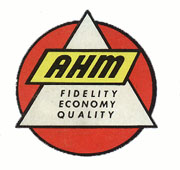 AHM is the initials for Associated Hobby Manufacturers, Inc. The company was founded in 1959 as a reseller of other companies' model railroad components. Initially an HO company, they entered into N Scale in the early 1970's as an importer of products made by Roco in Austria. For N Scale products, AHM apparently contracted to use the exact same molds as were used by Roco to produce early Atlas models. They also contracted with Rivarossi to make locomotives.
AHM is the initials for Associated Hobby Manufacturers, Inc. The company was founded in 1959 as a reseller of other companies' model railroad components. Initially an HO company, they entered into N Scale in the early 1970's as an importer of products made by Roco in Austria. For N Scale products, AHM apparently contracted to use the exact same molds as were used by Roco to produce early Atlas models. They also contracted with Rivarossi to make locomotives.
When AHM went out of business IHC picked up some of their line. Also, at least one body style was taken over by Eastern Seaboard models.

When AHM went out of business IHC picked up some of their line. Also, at least one body style was taken over by Eastern Seaboard models.
Manufacturer Information: 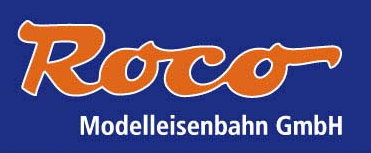 The company was founded in 1960 by Ing. Heinz Rössler and started with a plastic Minitanks series of military vehicles. After export to the USA became successful, the model line was expanded with model trains in HO scale and the smaller N scale. TT scale was also subsequently added to the product line. The model rail product line covers many European countries including Germany, Belgium, Luxembourg, France, Spain, Austria, Italy, Switzerland, Sweden and the Netherlands, and also the USA.
The company was founded in 1960 by Ing. Heinz Rössler and started with a plastic Minitanks series of military vehicles. After export to the USA became successful, the model line was expanded with model trains in HO scale and the smaller N scale. TT scale was also subsequently added to the product line. The model rail product line covers many European countries including Germany, Belgium, Luxembourg, France, Spain, Austria, Italy, Switzerland, Sweden and the Netherlands, and also the USA.
On July 15, 2005 ROCO Modellspielwaren GmbH was declared bankrupt. From July 25 the company continues as Modelleisenbahn GmbH, but still uses the Roco brand and associated logo. On October 1, 2007, distribution of the 'Minitank' product series was assigned to the German model car manufacturer Herpa.
Since February 2008 Modelleisenbahn also owns Fleischmann, which like Roco had gone bankrupt. The two companies continue as separate brands under Modelleisenbahn GmbH, while benefiting from economies of scale through joined development projects, marketing and procurement.
From Wikipedia

On July 15, 2005 ROCO Modellspielwaren GmbH was declared bankrupt. From July 25 the company continues as Modelleisenbahn GmbH, but still uses the Roco brand and associated logo. On October 1, 2007, distribution of the 'Minitank' product series was assigned to the German model car manufacturer Herpa.
Since February 2008 Modelleisenbahn also owns Fleischmann, which like Roco had gone bankrupt. The two companies continue as separate brands under Modelleisenbahn GmbH, while benefiting from economies of scale through joined development projects, marketing and procurement.
From Wikipedia
Item created by: gdm on 2016-11-29 19:30:58. Last edited by George on 2025-03-24 07:24:12
If you see errors or missing data in this entry, please feel free to log in and edit it. Anyone with a Gmail account can log in instantly.
If you see errors or missing data in this entry, please feel free to log in and edit it. Anyone with a Gmail account can log in instantly.


